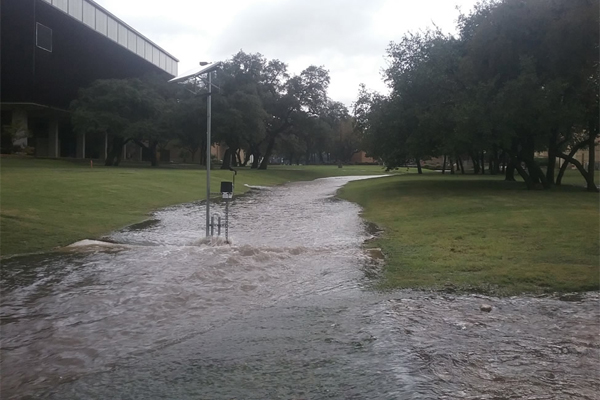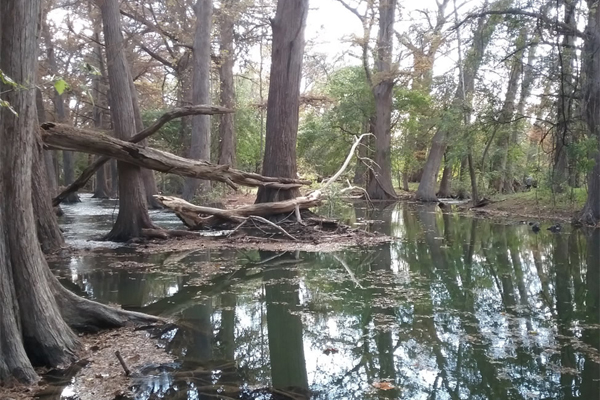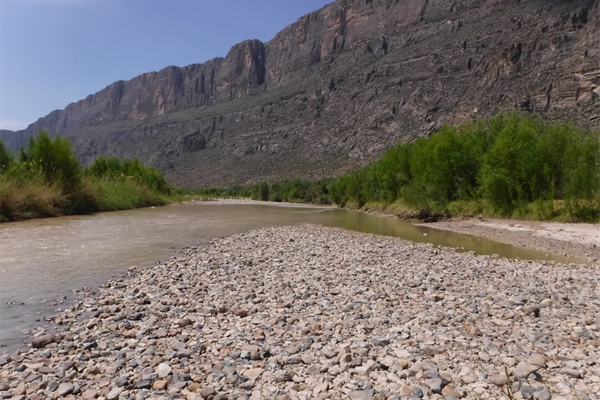
Urban Impacts on Water Quality
San Antonio is the seventh largest city in the U.S. and one of the fastest growing cities. I have several ongoing projects to understand how urban development impacts water quality of stormflow events and how best management practices (BMPs) can be used to mitigate urban impacts.
I have been working with Dr. Janis Bush and PhD student Mei Lani Cabico May to study the water quality of stormwater on the campus. We are also investigating the effectiveness of BMPs by sampling inputs and outputs from several BMPs constructed on the campus as part of new campus developments. We are also sampling stormwater quality across an urban to rural gradient across the Leon Creek watershed, a major subwatershed of the San Antonio River. Our research will help document the impacts of urban development on water quality and whether BMPs are effective at mitigating impacts of urban development.

Cibolo Creek Aquatic Ecology
Cibolo Creek is a representative stream of the Edwards Aquifer region and is undergoing rapid urban development as the San Antonio region grows in population. Research in my lab is focused on documenting the current habitat and stream communities present in the stream and understanding how the stream ecosystem changes as development proceeds. By investigating the impacts of urban development on the ecosystem, we hope to inform what habitats and species are most at risk from urban development and how management can best help preserve the habitats that support aquatic biodiversity in the south-central Texas region.

Desert River Ecology and Conservation
Fish and other aquatic organisms in desert rivers face of myriad of threats including altered hydrologic patterns, habitat loss, nonnative species, and water quality degradation. Effective management of native populations will be enhanced by an understanding of the relative and interactive effects of different threats.
I have been working with partners at Utah State University, the National Park Service, and other state and federal agencies to investigate how fish communities have responded to a multitude of impacts on the Rio Grande River in the Big Bend region. We are using statistical modeling to investigate the relative effects of different factors such as floods and droughts, water quality, channel habitat, and nonnative species. We are also investigating how food webs may have been altered by changes to the physical habitat and the establishment of nonnative riparian vegetation species.
In addition, I am developing research on intermittent and ephemeral streams in the San Antonio region, aimed at understanding how urban development impacts hydrology, geomorphology, algal communities, and riparian vegetation communities of these unique ecosystems.

